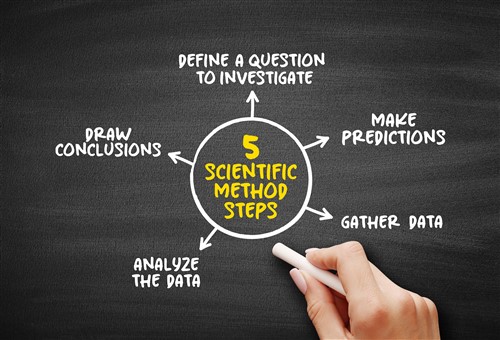
The car repair industry is not immune to silly buzzwords, catchy but meaningless phrases, and pseudo jargon. With that said, have you ever wondered what some (mainly American) authors of car repair-related web content (and the scripts of a great many YouTube videos) are on about when they talk about things like “diagnostic game plans” or “diagnostic game changers”, and the like?
Let’s take the phrase “diagnostic game plans” as an example. In American English, a "game plan" can be defined as a set of pre-determined actions one takes to achieve a certain goal or objective. All speakers of American English understand that a game plan can be drawn up for almost any endeavour, with winning football games, conducting wars, and developing strategies to resolve fault codes on modern vehicles being good examples. So why is any of the above important and relevant to modern automotive diagnostics? You may well ask because, in the context of modern diagnostics, game plans are constructed around a set of assumptions about the possible causes of a problem instead of being constructed around a set of facts and objective observations that include an assessment of the problem in its simplest form.
So, instead of working according to a game plan that is built on assumptions that can be manipulated to suit a preconceived goal or outcome, this writer would suggest that there is a more effective way to chase down faults on modern vehicles. Moreover, this method works for all types of automotive problems and diagnostic procedures because it does not allow one to make assumptions or guesses; if one follows the basic steps of this procedure, solutions to diagnostic challenges jump out at one, so let us start by describing-
To be sure, the term "scientific method" is often applied in ways that have nothing to do with a scientific approach to anything, but in terms of modern automotive diagnostics, we can define the scientific method as follows-
“…The scientific method is the process of objectively establishing facts through testing and experimentation. The basic process involves making an observation, forming a hypothesis, making a prediction, conducting an experiment and finally analyzing the results.”
Put differently, the scientific method only works if say, two mechanics working on the same problem on the same car at different times arrive at the same diagnostic conclusion if they-
Of course, there are more complex definitions of the scientific method, and as with most things, the proverbial devil lives in the details, but for our purposes, the example given above will suffice as we shall demonstrate at the hand of a case study involving the failure of the A/C system’s controls on a 2013 Honda CR-V. Before we get to the specifics of the case study, though, let us break the above definition of the scientific method (as it would apply to diagnosing say, a crank-no-start condition) down into digestible pieces by decoding some of the words used, starting with-
Establishing objective facts
In such a case, establishing objective facts refers to following a set of repeatable steps that will eventually explain why the engine does not start, i.e., establishing/finding the root causes(s) of the no-start condition. This does NOT refer to establishing the fact that the engine does not start, because we already know that the engine does not start.
Making an observation
In the context of diagnostics, making an observation is synonymous with verifying that the engine does not start. Other observations could be verifying that-
- etc, etc, but the point is that making such observations provides a solid base from which to investigate the condition further in a logical manner. For instance, you don't want to spend three hours investigating the condition when the vehicle has run out of petrol, or perhaps ADBlue in the case of many diesel engines.
Forming a hypothesis (based on observed symptoms and stored fault codes)

In the scientific method, and by extension, scientific reasoning, a hypothesis is roughly analogous to the "gut feelings", or hunches we often get regarding the causes of a problem before we have done any testing to gather objective data about the problem.
Sometimes, our gut feelings or hunches are correct, but if the truth were told, many of us have fallen down diagnostic rabbit holes because our gut feelings were wrong. If we get it wrong, we are often not only tempted to throw parts at the problem until something sticks but also to construct theories about the cause(s) of the problem, which rarely ends well because theories are supported by evidence, i.e., valid and reliable test results- which we don’t have yet because we have not yet tested anything.
Making a prediction
Once we have a valid and reasonable hypothesis based on our observations, we can predict what we'll find once we start testing relevant systems and components. For example, we could predict that say, the fuel pump has failed based on the fact that the fuel tank is full, and the power supply to the fuel pump connector is within specs during engine cranking.
Conducting an experiment
In this case, the experiment would involve validating your prediction by taking a waveform of a current flowing through the pump or removing the pump from the tank to test it manually.
If our prediction was wrong and the fuel pump works as it should, we must design another experiment (test something else). Such experiments could be checking that the fuel filter is not blocked and attempting to validate the new prediction by performing targeted tests or measurements.
Analysing the results
The only sure way to arrive at valid diagnostic conclusions is by analysing the results of the various experiments (tests) we have performed during the preceding steps. Such analyses could involve-
-etc, but we are sure you get the point, which is that all diagnostic conclusions must be supported by objective analyses and assessments of all relevant test data and results for any conclusion to be valid or accurate.
So there we have it- a fool-proof method of diagnosing any problem on any vehicle, but as we said before, the devil of the scientific method lives in its details. For example, while following the steps of the scientific method in the correct order is not difficult, the last step, which involves analysing test data and results, can be tricky if you are not up to speed on how the system(s) you are testing works.
To get this step right, one needs to have a thorough understanding of how modern automotive control systems work (ADAS systems come to mind), and how these systems are integrated not only into each other but also into seemingly standalone systems like the ABS. However, we need to add to this our problem-solving abilities and critical thinking skills, and it also helps to remember that the control systems in modern cars are built on an all-important principle that states- “A must happen before B can happen before C can happen, and so on down the alphabet.
However, when we get to, say, F, which must happen after E had occurred, F might not happen because not all of the preceding steps had been completed successfully. So, essentially, if we substitute the letters of the alphabet with inputs from sensors, control processes, and logical outputs, we can almost always trace the progression of a fault or malfunction through multiple systems or components backward to its origin by using the scientific method.
Also, the ABCDEF rule is a slightly perverted philosophical notion that says two seemingly opposing truths things cannot both be correct at the same time, but in modern automotive diagnostics, we often find that several consecutive truths can all be valid at the same time, and the ABCDEF design principle is proof of that. Moreover, keeping the first A, then B, then C rule in mind is hugely helpful when we are trying to decode non-DIN wiring diagrams because this rule makes it a whole lot easier to trace the path of a current through several consecutive electrical consumers, which leaves us with-
In Part 2 of this two-part article, we will explore some of the finer details of the scientific method of diagnosing faults by discussing the A/C control failure on a Honda CR-V we mentioned earlier in this article.